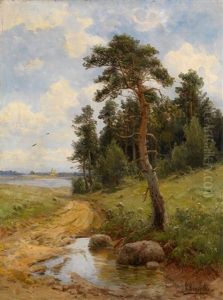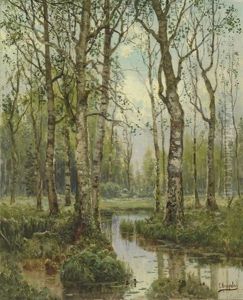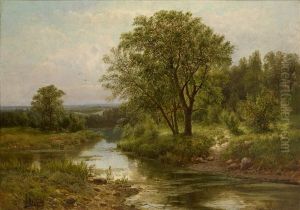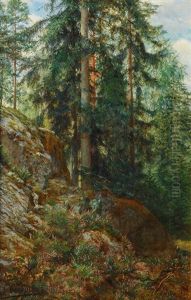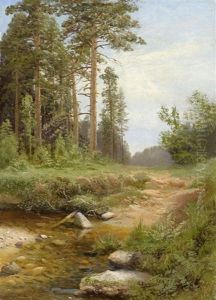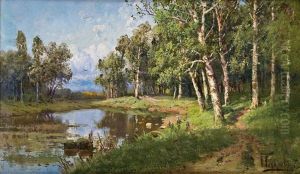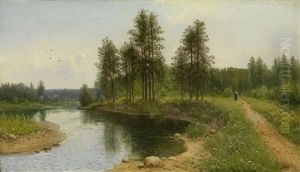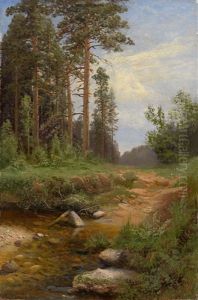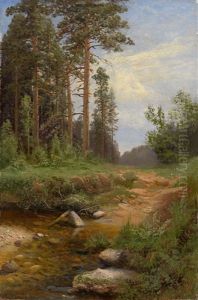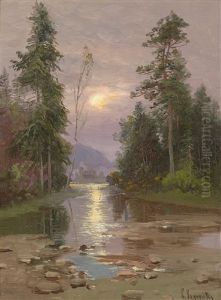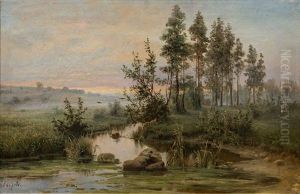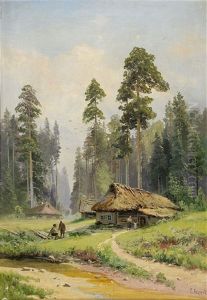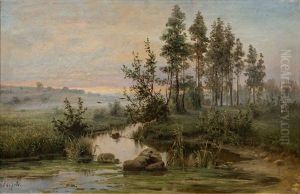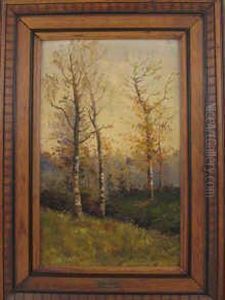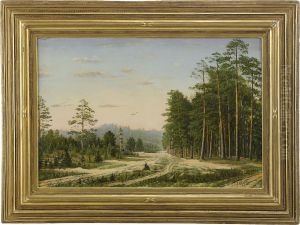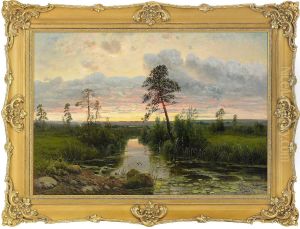Simeon Fedorovich Fedorov Paintings
Simeon Fedorovich Fedorov was a significant figure in Russian art, whose life and career spanned the late 19th and early 20th centuries. Born in 1867, in the Russian Empire, Fedorov emerged as an artist during a period of considerable social, political, and cultural change in Russia. His work is often associated with the realism movement, reflecting the social issues and everyday life of his time, though he also explored other styles and themes throughout his career.
Fedorov received his formal art education at the Imperial Academy of Arts in Saint Petersburg, which was the premier art institution in Russia, fostering the talents of many artists who would go on to achieve national and international acclaim. At the Academy, Fedorov honed his skills in painting and drawing, demonstrating a keen eye for detail and a profound empathy for the human condition. His early work showed a strong inclination towards portraits and scenes of rural life, capturing the essence of his subjects with sensitivity and depth.
Throughout his career, Fedorov exhibited his work widely, participating in numerous exhibitions and gaining the respect of his peers and critics alike. His paintings were notable for their technical skill, emotional depth, and social commentary. Despite his success, Fedorov's life was not without challenges. The early 20th century was a time of turmoil in Russia, with the country on the cusp of revolutionary change. The political and social upheavals of the time were reflected in Fedorov's later works, which took on a more somber and introspective tone.
Simeon Fedorovich Fedorov's contributions to Russian art were cut short by his untimely death in 1913, at the age of 46. Though his career was relatively brief, his work left a lasting impact on the Russian art scene. Today, Fedorov's paintings can be found in museums and private collections in Russia and around the world, serving as a testament to his artistic legacy and the tumultuous era in which he lived.
